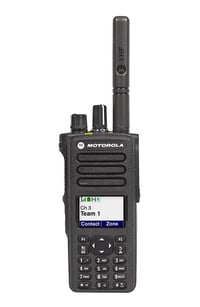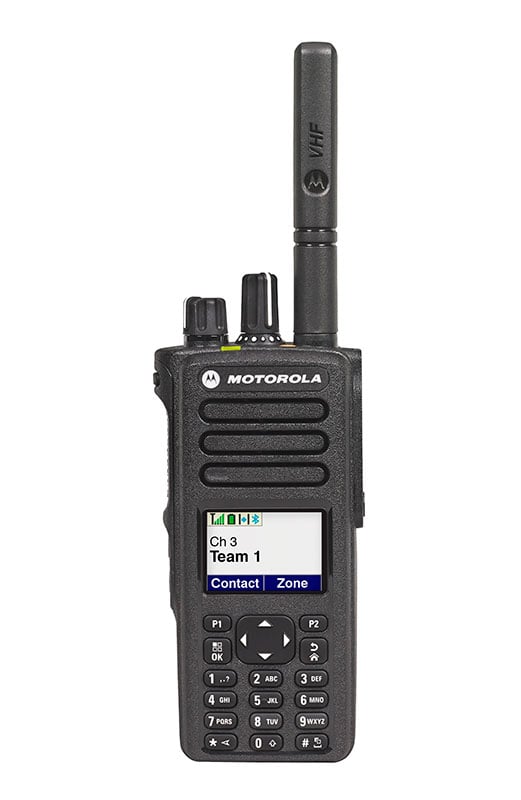It probably seems as if Motorola two-way radios are constantly evolving, and gaining new features and functionality every time you turn around – and that’s because they are! (In fact, Motorola has had a key role in the evolution of two-way radio communication since the very  beginning.)
beginning.)
Particularly as different models add new options, it can be helpful to look at Motorola radios side-by-side to compare their attributes and features, from push to talk to text messaging.
For now, let’s take a closer look at three models of Motorola two-way radios: the MOTOTRBO XPR 7550e Enabled, the XPR 7550e Capable, and XPR 7550.
Battery Life
The XPR7550e ENABLED models win on battery life with a low-voltage 3000mAh battery that has a maximum battery life of 29 hours (digital, VHF radio frequency).
The other two models last up to 21 hours (digital, VHF), and users should expect a lower battery life for analog and UHF.
Integrated Wi-Fi
Integrated Wi-Fi enables remote software upgrades and indoor and outdoor location- tracking capabilities on the XPR7550e ENABLED models and as an option on the XPR7550e CAPABLE models.
Trunking Solutions...
In terms of trunking solutions, all three models now include:
- Capacity Plus: Serves up to 1,200 radio users by trunking up to 12 digital voice talk paths and 24 data paths.
- Linked Capacity Plus: Links up to 1,200 users (12 voice paths) per site across 3 sites or up to 600 users per site (6 voice paths) across 15 sites.
- Connect Plus: Delivers the largest system, serving up to 250 sites, with as many as 3,000 users per site. Sites are connect with a standard IP network, allowing workers across buildings, states or even countries to collaborate.
The XPR7550e ENABLED models also offer Capacity Max, which serves up to 3,000 users at 250 sites and offers centralized control.
…And Non-Trunking Solutions
All three of these two-way radio models also offer IP Site Connect, a non-trunking solution that can be used to connect up to 15 disparate sites using a standard IP network. Motorola presents the solution as an easy upgrade from a conventional single-site radio system that can be later built upon to Linked Capacity Plus or Connect Plus.
To learn more about creating and maintaining a successful two way radios system, contact Chicago Communications to set up a free consultation.



